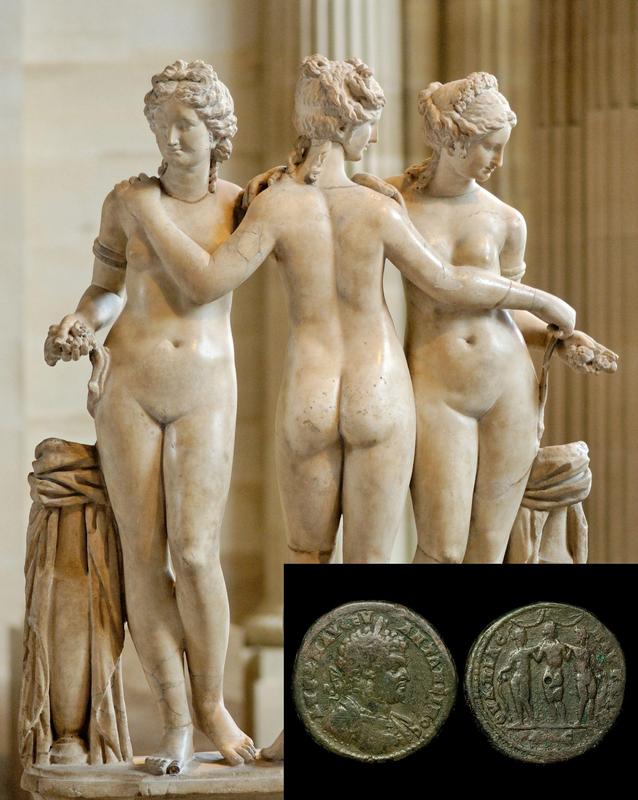Iconography
Ancient art relies heavily on specific information and images that were familiar to even an illiterate Hellenistic individual. Just as Americans are steeped in the fairy tales of The Brothers Grimm (and their many versions), ancient Greeks and Romans must have been steeped in their own versions of these stories. The dalliances of the gods, the fights of famous heroes and the glory of ancestors would have been part of everyday culture; especially since these ideas were interwoven with everyday religion in ways that modern people might not understand. This section is designed to help with that background knowledge necessary to fully understand what these small works of art have to say.
This statue, for example, is a Roman copy of a Greek original featuring the three Graces. The statue, or at least the image of the three graces, with two facing forward and one facing backward, would have been famous throughout the ancient world. The coin, produced in a province under Caracalla's reign, would have been one way to spread the image and reputation of the emperor in connection with the eminence of this image; which, according to Seneca (De Beneficiis 1.3:2) represents the three aspects of generosity: giving, receiving and giving in return. Not surprisingly, as one of the most reviled emperors of the Roman empire, Caracalla was not well known for his generosity so the use of the this image is a bit ironic.
